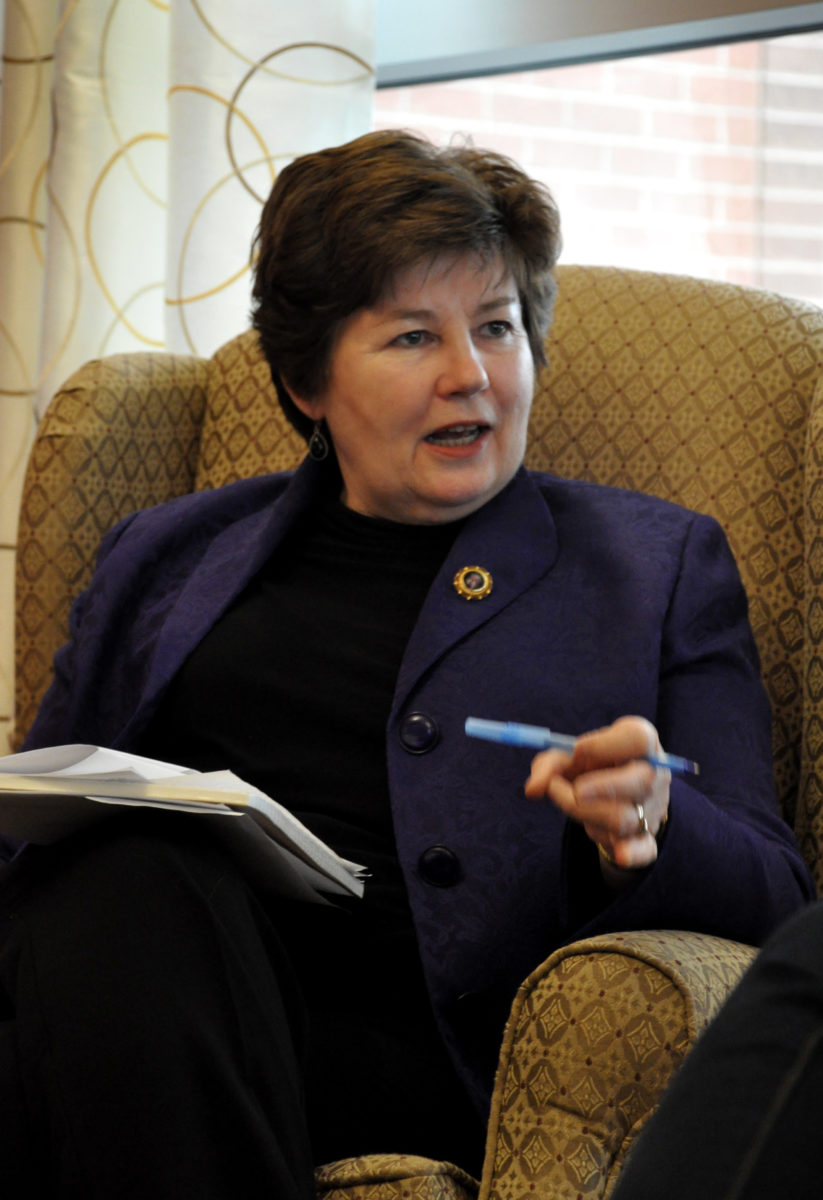
STU full-time students will be receiving a $184 credit on their tuition next month.
Post-secondary education minister Jody Carr announced last week that STU and the government have reached an agreement concerning the school’s tuition.
“We’ve recognized from the provincial government that there is a need to align STU’s reality with the funding mechanism [we use to determine tuition],” Carr said.
Last year, STU raised tuition $434. The government has a tuition cap of $150 raised each year. The initial tuition raise will now be reduced to $250 and all full-time students will be credited $184 on their accounts.
STUSU president Elizabeth Murphy said this is great for students.
“It puts money back in the pocket of students,” Murphy said. “That is awesome.”
STU President Dawn Russell said international students were not affected by the cap, their tuition only went up $150. Tuition also works differently for part-time students so they aren’t included.
The university is also looking to bring tuition closer to the provincial average. The plan was to do this over three years, but now they’ll be doing it over five.
“That means less of a spike for students [since] it’ll be done over a longer period of time,” Carr said. “And STU will still be under the provincial average in tuition.”
Getting more funding to extend the time period was the main issue STU administration put forward during meetings with the government about this issue. Russell said they couldn’t bring tuition closer to the provincial average during a long period of time without additional funding from the government.
What this does, though, is leave STU short on revenue for the start of this plan, Russell said.
To combat this, the provincial government is adjusting the base funding grant they give to STU. The university is getting an extra $225,000 and that will remain permanent.
“STU has been suggesting for quite a long time that they’re under-funded based on their current reality of enrolment,” Carr said.
Enrolment decreased by seven per cent this year.
“We sat down with [Russell] and have recognized that we can make an adjustment to their permanent funding they get from the province,” he said.
Russell said this grant is still lower than she would like.
“But we also appreciate the fiscal situation of the government,” she said.
The extra grant money does not affect funding to any other university, Carr said.
“This extra funding we’ve found through extra government operation, through savings that were able to be found, through underutilization of existing programs and this will able to be provided [so it] won’t impact other universities or existing programs.”
Murphy said the great thing about this is it makes tuition predictable for students.
“Students won’t receive notice a couple of months before they start their new year, being notified that there’s a huge increase,” Murphy said. “They’ll know exactly what that increase is each year and it will be spread out.”
This agreement was created through a series of meetings between the government and STU since April. Murphy said the STUSU have also been in talks with the university and pressuring the government to do something since she took office.
Direct agreement between students, the government and STU was given at a Board of Governors meeting on Oct. 5 which the student Board of Governors representatives attended.
Russell said it took a lot of time and energy to get this agreement made but now the university can focus on other things.
Carr said STU’s tuition issue was lingering over the summer and once he took office Premier David Alward said he wanted it addressed. Carr said it also ties to the government’s commitment for sustainable and predictable tuition for New Brunswick universities.
Russell said she credits both Alward and Carr for getting the issue resolved.
STU is not in debt and wants to make sure it doesn’t run a deficit in the future. Russell said this agreement helps ensure that it won’t happen and is a better situation for students than the previous three-year plan.
“We needed to increase our tuition but if we could increase it and bring it closer to the average over a longer period of time, that’s better for our students.
